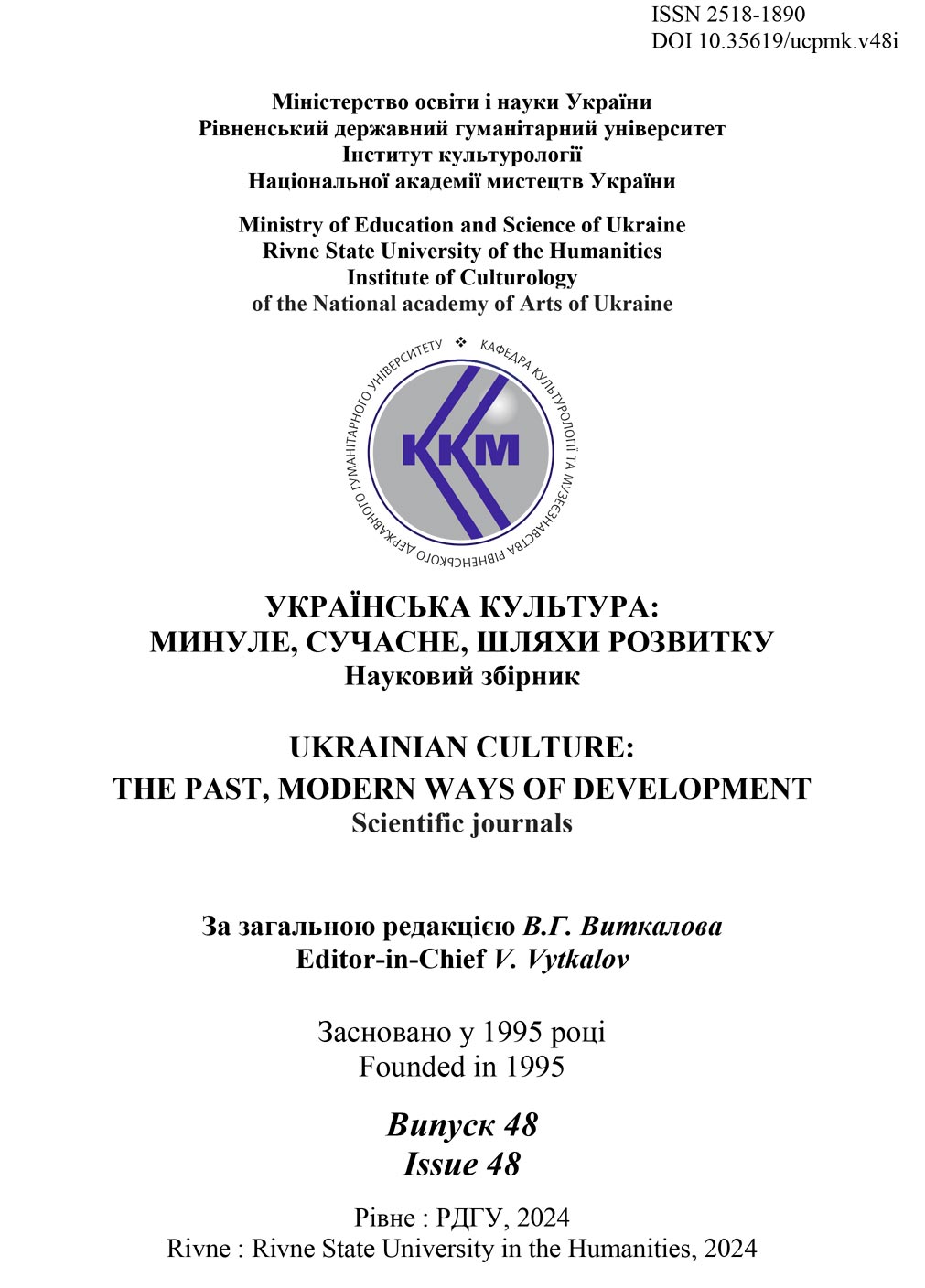THE MUSICAL LANGUAGE OF QIN ZHU IN THE CHINESE FOLK SONG «THE GREAT RIVER FLOWS EASTWARD» BASED ON THE POEM BY SU SHI
DOI:
https://doi.org/10.35619/ucpmk.v48i.757Keywords:
Chinese music, art song genre, romanticism, «poetry of waters and mountains», expressive means, musical language, compositional creativity.Abstract
The purpose of the work is to show the signs of musical thinking and musical language of the composer Qing Zhu in the first sample of the Chinese art song «The Great River Flows East» (1920) based on the poems of the medieval Chinese poet and writer Su Shi, to reveal the typological features of the genre and to comprehend the peculiarities of Qing Zhu's musical language at the intersection of European romantic trends and typological features of the Chinese «poetry of rivers and mountains».
The methodological basis of the work is determined by the tasks and artistic specificity of the subject of research and includes: musical and stylistic, analytical and theoretical approaches.
The scientific novelty of the work is determined by the fact that it is the first to demonstrate the signs of musical thinking and musical language of the composer Qing Zhu on the example of the Chinese art song «The Great River Flows East» (1920) based on the poems of the medieval Chinese poet and writer Su Shi. The article analyzes in detail the expressive
means: melody, harmony, rhythm, as well as the correspondence between the poetic text and its musical embodiment.
Conclusions. In Qing Zhu's Chinese art song «The Great River Flows East» based on Su Shi's poem, the young master borrowed Western compositional techniques in combination with Su Shi's classical poetry, «the poetry of waters and mountains».
Creating the heroic and majestic mood of section A in juxtaposition with the dreamy and lyrical section B, Qing Zhu uses the most appropriate expressive means: melody, harmony, rhythm and dynamics. The melodic lines, depending on the image being created, are sometimes lyrical, sometimes dramatic, sometimes recitative. Steady consonances of the first,
second, third, and sixth steps and their reversals are used to depict invincibility and courage. Accordingly, for tense climaxes, dissonant double diminished or modified harmonies, chords with replaced tones, and elliptical turns are used. Flexibly,
depending on the mood palette, tonal changes are introduced: juxtaposition of the same and parallel keys, as well as distant ones – e-moll – B-dur, E-dur – As-dur, g-moll – e-moll. Tempo and dynamic shades undergo dramatic and compositional changes.




